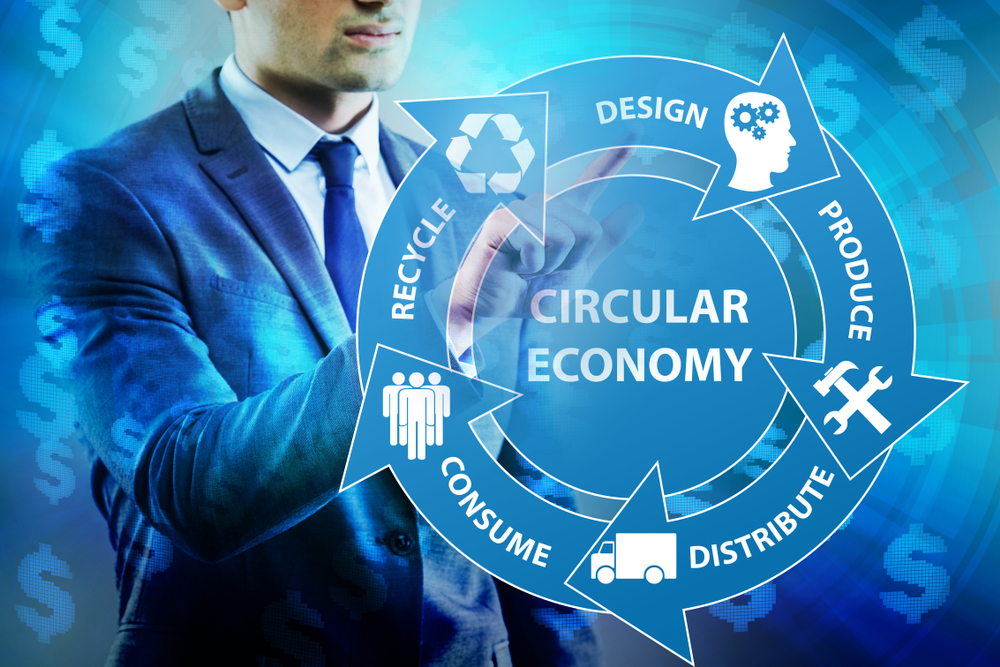
Big Name Players
In September Prime Minister Scott Morrison in his address to the UN General Assembly said that Australia was leading the research into recycling plastics and highlighted his determination to create a ‘circular plastics economy’, referencing a proposed ban on ban exports of waste plastic, paper, glass and tyres, starting in 2020. Andrew ‘Twiggy’ Forrest also made the news recently launching a commercial initiative to tackle plastic waste where manufacturers of virgin plastic pay a voluntary financial contribution for doing so – a circular economy of plastic. This tax would not be paid on recycled plastics, thereby creating a driver for producing recycled plastics stem the flow of plastic waste.
Federal and State Government Involvement
In May of this year the Federal Government committed $3 million to support recycling projects in conjunction with Planet Ark. One of these projects is the Circular Economy Hub which has been dubbed the B2B ‘eBay’ for the circular economy hoping to match buyers and sellers in waste resources to help them identify products with sustainable materials, including recycled content.
The WA State Government in their Waste Strategy to 2030 has also publicly stated a vision for WA to become a ‘…sustainable, low-waste, circular economy in which human health and the environment are protected from the impacts of waste”.
This week the Circular Economy Club (CEC) will celebrate its inaugural “Circular Cities Week” global event (Oct. 28-Nov. 3, 2019). The goal being to push, with a united voice, for the design and implementation of circular economy strategies in cities worldwide.
But what exactly is the circular economy anyway? Where did it come from and where is it going … or taking us?
Circular v Linear
At the centre of the circular economy is the elimination of waste and pollution. Products are designed to keep materials in use within the economy and avoid the use of non-renewable resources and enhancing renewable ones. The concept is based on sharing, leasing, reuse, repair, refurbishment and recycling, in an (almost) closed loop, where products and the materials they contain are highly valued. Contrast this with the Linear economy which is the production of goods from finite raw materials and creating waste products. Therefore, the big questions asked by the Circular Economy are how to design products to efficiently manage resources, how to best use these products and what waste is generated after or during their use?
Haven’t we heard all this already?
Well, yes…sort of. The circular economy concept touches on a few well-established environmental and sustainability concepts such as cleaner production, closing the loop, waste minimisation, diversion away from landfill, environmental stewardship, Life Cycle Analysis (LCA) and industrial symbiosis. These aforementioned tools and concepts tend to stand-alone, focused on the products themselves, or on one particular element of value creation within the life-cycle of a product or service. All together they form an integral part of the circular economy concept.
A Holistic Approach
The phrase was first mentioned in a report in January 2012 entitled Towards the Circular Economy: Business Rationale for an Accelerated Transition commissioned by the Ellen MacArthur Foundation, who states that the circular economy is ‘one that is restorative and regenerative by design’.
The concept has gained traction over the years, mainly due to the good work of the Ellen MacArthur Foundation. In 2017, the British Standards Institution (BSI) developed and launched the first circular economy standard “BS 8001:2017 Framework for implementing the principles of the circular economy in organizations.
The circular economy is a holistic approach to production and the concept of value. It promotes a sharing economy, seeks to extract maximum value through alternative uses across multiple value streams and goes beyond LCA as it refuses to acknowledge that a product should have a beginning and an end of life. It is really a shift in the entire thought process of how goods are designed, produced, manufactured, bought, sold and disposed of, or better yet – repurposed.
New Vision
The concept and term, perhaps unfamiliar just a few years ago, has now also caught the imagination of thought leaders across the world, and is taking shape as a viable, practical alternative to the current linear economic model. Completely eliminating waste is difficult if not impossible but a circular economy for plastic seems like an attainable goal, even in the short term. Last year, global producers and retailers announced or reaffirmed pledges for a circular approach to packaging, using recycled and recyclable materials, in connection with the new plastics economy initiative.
There are already many success stories of the circular economy in various industries but there is no one size fits all approach on how to transform the concept to mainstream practices. Nonetheless, even if used just as a vision, a strategic circular economy approach can be a great way for producers, designers, innovators, and consumers alike, to consider ways of conducting business and creating tangible value that they may not have considered before.
We will be discussing general waste management and the circular economy at our upcoming Environmental Essentials Training Course on November 7 & 8. Hope to see you there.
Further reading
http://www.circulareconomyaustralia.com/
https://www.ellenmacarthurfoundation.org/case-studies
https://sustainability.com/our-work/insights/creating-a-circular-economy-for-plastics/
https://sustainability.com/our-work/insights/creating-a-circular-economy-for-plastics/
